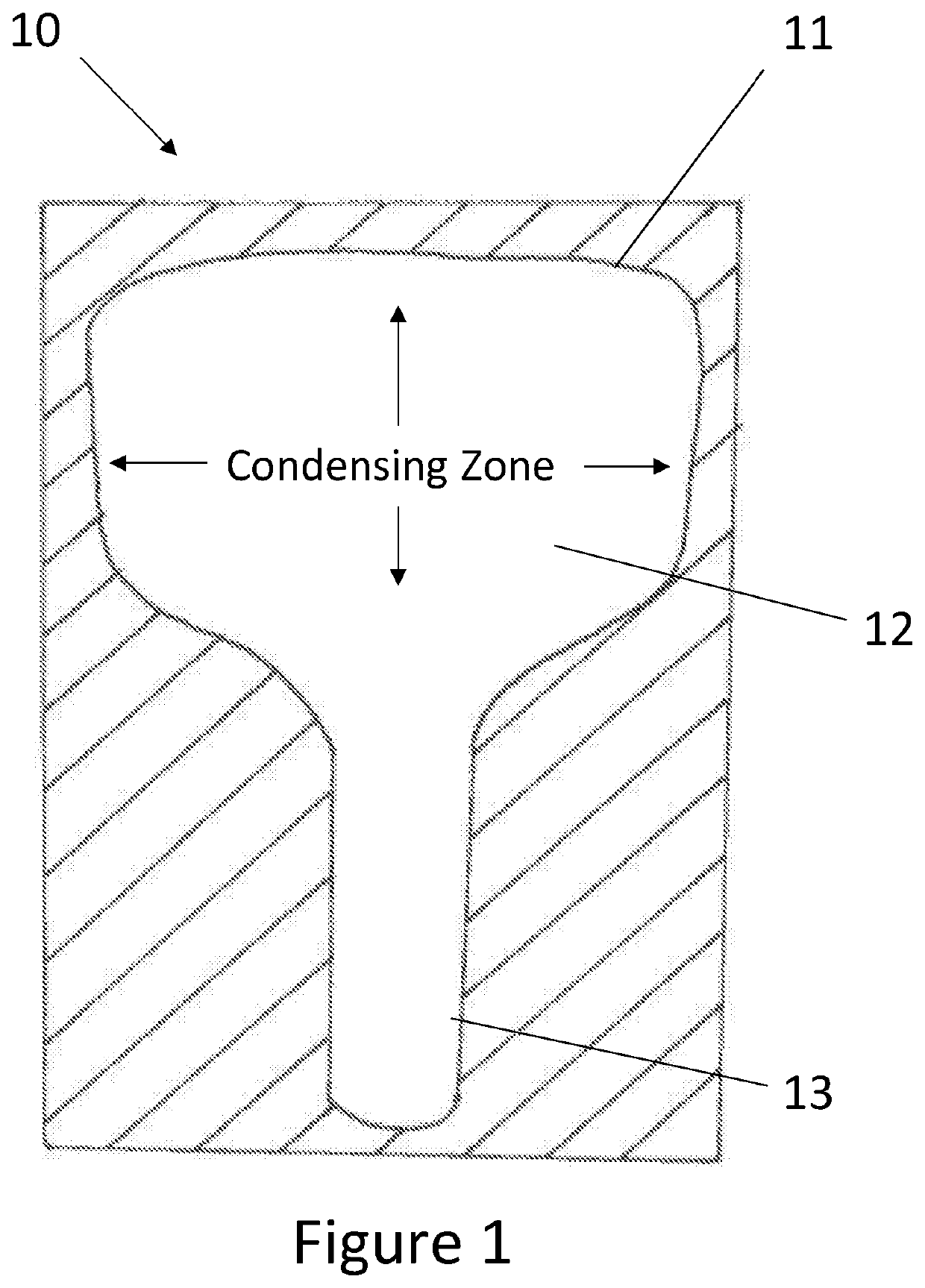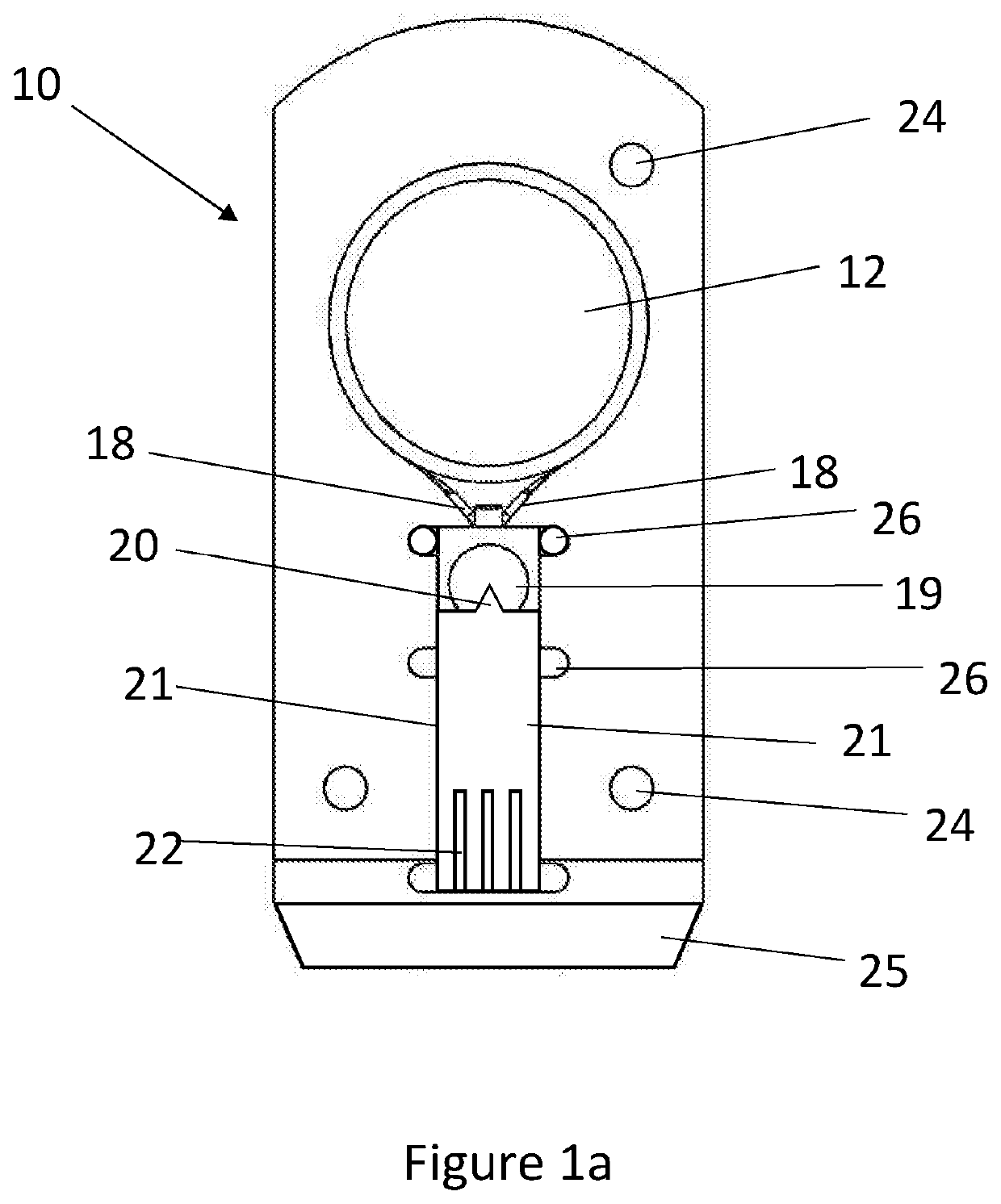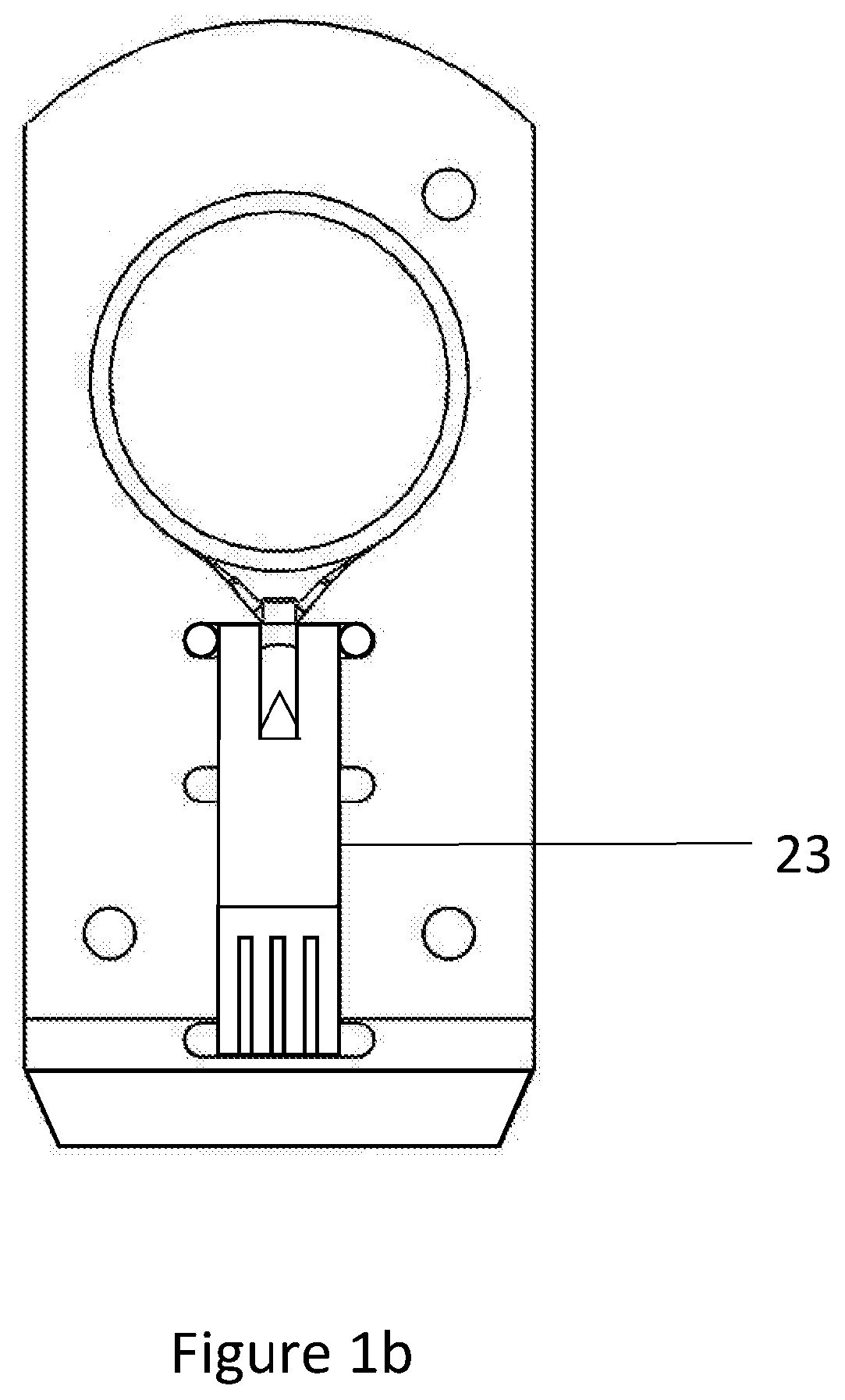Breath-condensate device
a technology of breath condensate and vaporizer, which is applied in the field of breath condensate devices for analysing exhaled mammalian breath, can solve the problems of affecting the results obtained, affecting the stability of liquid reagents used, and the risk of contamination from outside sources, so as to eliminate the risk of sample contamination or sample loss, optimize shelf life stability, and avoid complex pumping strategies
- Summary
- Abstract
- Description
- Claims
- Application Information
AI Technical Summary
Benefits of technology
Problems solved by technology
Method used
Image
Examples
Embodiment Construction
[0074]The analysis of exhaled breath to determine physiological dysfunction in a person or animal has been known for many years. The presence or otherwise of components of the breath can show deficiencies in the body, such as lung function or cell function. To this end, devices have been developed, which aim to collect the exhaled breath, including the more volatile components, which are otherwise not captured and so escape analysis. In many devices, the breath is first condensed to liquid or solid form, which is then analysed.
[0075]There are however problems which need to be overcome in obtaining an analytical result. Many devices leave the user with the problem of carrying out the analysis. Often the condensed sample needs to be transported to a location remote from that where the analysis was carried out. However, some of the breath components which need to be characterised, such as hydrogen peroxide, are inherently unstable and so will have decomposed to an extent before any ana...
PUM
| Property | Measurement | Unit |
|---|---|---|
| volume | aaaaa | aaaaa |
| thickness | aaaaa | aaaaa |
| perimeter | aaaaa | aaaaa |
Abstract
Description
Claims
Application Information
 Login to View More
Login to View More - R&D
- Intellectual Property
- Life Sciences
- Materials
- Tech Scout
- Unparalleled Data Quality
- Higher Quality Content
- 60% Fewer Hallucinations
Browse by: Latest US Patents, China's latest patents, Technical Efficacy Thesaurus, Application Domain, Technology Topic, Popular Technical Reports.
© 2025 PatSnap. All rights reserved.Legal|Privacy policy|Modern Slavery Act Transparency Statement|Sitemap|About US| Contact US: help@patsnap.com



